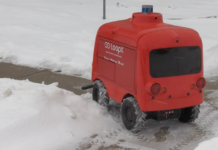
The concept of self-driving cars is exciting but worthy of some concern. A key problem for self-driving cars in Ontario that differs from areas like Florida or California is how the car will handle harsh weather conditions.
Brutal winters are routine for many Canadians, and so is the impact these have on driving conditions. After a heavy snowfall, drivers know to be especially alert, paying close attention to pedestrians, other vehicles, and the road conditions themselves.
As much as artificial intelligence (AI) has progressed in the field of autonomous driving, it is still critical to question whether this technology can benefit all members of society, and if it is qualified to handle all kinds of weather and road conditions.
As stated in a Wired article on self-driving cars in winter conditions, “snow and rain can obscure and confuse sensors, hide markings on the road, and make a car perform differently.”
This gap in the abilities of AI operated vehicles is concerning for drivers that are looking forward to using such technologies in the future. The article also implies that companies could establish a competitive edge by focusing their efforts on developing technology needed for self-driving cars to navigate harsh weather.
Scale AI, a start-up attempting to tackle this issue, recently released their Canadian Adverse Driving Conditions (CADC) technology as open source. In an article by VentureBeat, Scale AI said, “CADC is the first [dataset] to focus specifically on ‘real-world’ driving in snowy weather.”
It’s process involved collecting over 56,000 photographs of various driving conditions. These images included road elements such as pedestrians, bicycles, trucks, and most notably, snowfall. AI’s struggle to adapt to harsh driving conditions is concerning but solvable.
Scale AI’s CEO Alexandr Wang discussed how many drivers struggle with difficult road conditions, but can improve with driving experience and proper safety procedures. In the future, AI technology should be able to accomplish this as well, but it needs more data in order to reach that point. By working toward the creation of AI that is capable of performing in abnormal weather conditions, Canadian drivers can feel assured that their living conditions are being considered in the development of self-driving technology.
Additionally, this advancement is promising for UW’s self-driving vehicle project, Autonomoose. Their vehicles and technology played a part in the development of CADC by driving and capturing the conditions of winter roads.
Through the involvement of Autonomoose, UW is engaged in answering some critical questions when it comes to the abilities of self-driving vehicles. By facing the gaps in AI technology head-on, it is expected that self-driving cars will become even safer, and move one step closer toward being a durable, effective, and efficient form of travel for users in any climate.






























